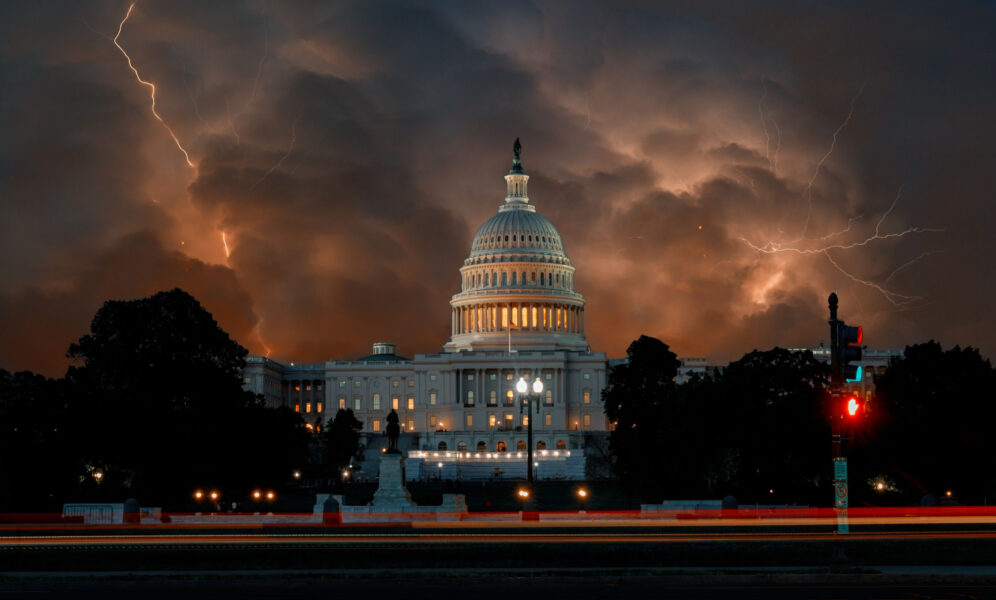Two years ago, a mob defiled the very citadel of US democracy. Lies exploded into violence. And disinformation metastasized into insurrection, with the encouragement and complicity of those who actively and purposefully spread falsehoods about the 2020 US presidential election.
On that dark day, the perils of disinformation—those lies and falsehoods deliberately spread for political and financial gain—became shockingly, frighteningly clear to the nation.
Two years and one midterm election later, we have fought back, learned much, and been heartened by the will of the people to protect our democracy against lies and those who wield them.
But the fight is not over. The threat of disinformation, and the bad actors who trade in it, is as active as ever. On this grim anniversary, I wanted to celebrate the steps we’ve taken toward building a healthier democracy and safer world—and tell you what I’ll be watching for in the months and years ahead.
A win for democracy: Voters rejected election deniers in key battleground states
It turns out that election denialism was a losing political strategy in high-profile races in battleground states. Election deniers—those candidates who falsely claimed voter fraud or openly questioned the legitimacy of the 2020 presidential election—lost every race in the midterm election for positions that would have allowed them to potentially subvert the 2024 election in key swing states, including the Secretary of State races in Michigan, Nevada, Arizona, and Wisconsin, and the governor races in Pennsylvania and Arizona.
Make no mistake. This is a heartening victory for the future and security of our democracy. But it is far from unequivocal, and it must not lead to complacency. These crucial races were decided by only slim margins, and many other election deniers did win races less pivotal—but still dangerous—for the future of our democracy. Indeed, voters still sent more than 150 election deniers to Congress, ushering these dealers of disinformation into the legislative heart of our federal government.
We can also take heart that the midterm elections saw high turnout—the 21st century’s second-highest midterm participation, and the second-highest participation levels by voters under 30. Our elected bodies are more diverse than ever and the 2022 elections saw an unprecedented number of women elected across the country. The danger is real, but so is the potential for positive change.
We’ve seen real progress on climate
Even with narrow margins in Congress, the federal government was able to pass significant legislation over the past two years, including the Inflation Reduction Act, which represents the biggest investment in a safer climate that Congress has ever undertaken. This law, despite its limitations, has the potential to accelerate the clean energy economy we need. Fighting climate change is, of course, a work in progress, but the path forward is clearer than it has ever been.
The politics of climate have fundamentally changed from where they were even a few years ago. Renewables are rapidly becoming cost-competitive with fossil fuels and clean energy solutions are already being deployed across the country. A rising generation of young voters will prioritize climate in elections to come. In the near term, the White House, federal agencies, states, and local governments can and must take action to build on these positive trends.
Yet there has been little accountability for election deniers in office, especially the “Sedition Caucus”
Following the 2020 election, 147 members of Congress—eight senators and 139 House representatives—voted against the legitimate certification of state electoral votes for Biden, a blatant attempt to subvert the democratic process premised largely on false claims of voter fraud. These elected officials tried to achieve what the January 6 mob couldn’t win by force: overturning an election and preventing the transition of power. Since then, members of this “Sedition Caucus” have faced limited and dwindling consequences for their actions.
Companies and other donors briefly suspended donations to these members, but most have quietly resumed their financial support of these officeholders.
Even more concerning: All eight of these senators remain in office. In the House, 124 of the 139 members of the Sedition Caucus ran for re-election in the midterms. Of those, 118 won. And many of these elected officials are hostile to the very idea of effective governance—for the first time in a century, the US House failed to even elect a Speaker on its first day.
Without accountability and consequences as a deterrent to anti-democratic activity, threats of future election subversion continue to roam within the very halls of Congress.
Disinformation ran rampant during the midterm election
Lies about non-existent voter fraud weren’t the only form of disinformation circulating in advance of and during the 2022 midterm election. We also saw concerted efforts to deceive voters—especially voters of color—about where and how they could vote.
Social media may be getting worse
The vectors of disinformation are many, but social media is a major channel, and the problem isn’t going away. Twitter has disbanded its Trust and Safety Council, gutted its content moderation staff, and invited back accounts that had previously been banned for hate speech, inciting violence, and other reprehensible behavior.
Also see TikTok, which has become a growing hive of disinformation with the potential for even greater deception as the truth-twisting power of deepfake videos and other disinformation technologies only grows stronger.
And the algorithms at both platforms, as well as at Facebook, continue to reward and elevate the visibility of content that outrages, incites, and angers people—reactions that purveyors of disinformation actively seek to exploit.
Those who purvey disinformation will shift their tactics
There is no doubt that those who wield disinformation will adjust their tactics over the coming months and in advance of the 2024 election. They will continue to use disinformation to divide and conquer those who should stand together to build a safer, healthier world; work to mislead and misdirect people into making decisions against their own interests; and strive to overwhelm and exhaust all of us with a flood of false information.
We’re already starting to see the latest strains and focus of these growing disinformation campaigns, whether it’s ramping up attacks on clean energy, electric vehicles, and other solutions to the climate crisis; targeting socially responsible investing; casting doubt on vaccines and public health measures; or blatantly greenwashing the continued planet-cooking activities and deceptive practices of fossil fuel companies.
What’s more, we can expect an onslaught of disinformation and misleading statements from a Republican-led House as committees launch a slew of politically motivated investigations that will include all of these tactics.
We must remain vigilant
One of the most important things you can do is to understand how to most effectively counter disinformation. UCS offers a range of resources to help you do so, from an essential training video on communication strategies, best practices, and pitfalls to avoid to a wealth of web resources on what you can do about disinformation to materials and resources that can help you train others.
There’s a pathway out of the danger
There’s more work to do to protect democracy—and you can help. First, we must urge Congress to do more. The Electoral Count Reform Act, included in last year’s omnibus funding bill, is an important first step—it’s the most significant Congressional response to the insurrection to date. It clarifies the ceremonial role of the vice president in the certification of the Electoral College vote, raises the threshold to hear objections to a state’s electors, and provides a judicial review process if a state legislature attempts to call into question the results of a presidential election.
As essential as these protections are, they are a small part of the work needed to protect the electoral process. Federal protections against racial voting discrimination, as well as national election standards that provide voting options and ballot access for all voters regardless of where they live, were included in the John Lewis Voting Rights Advancement Act and the Freedom to Vote Act, but both of them were defeated in the Senate by the GOP minority. They’re still worth pursuing.
If Congress can’t act in the near term, the White House should use its power to extend voting protections through federal agencies, require government contractors to disclose political expenditures, and empower a high-profile voting rights task force through the Department of Justice to enforce federal voting rights.
The Department of Justice should also follow the overwhelming evidence of criminal activity provided by the January 6th Committee to prosecute the former president and his co-conspirators who attempted to subvert the election. If we fail to hold the former president accountable for his criminal activity, we are only waiting for a more competent seditionist to learn from the 2020 attempt to overthrow the government.
We can all play a role in bringing democracy back, starting in our own neighborhoods. We need to revitalize and strengthen the link between ordinary voters, their communities, and political parties. Community-based civic organizations can build power through relational organizing, deep-canvassing, and organization-building at the grassroots level, building more responsive and responsible parties from the ground up. Community groups and individuals can engage the millions of potential voters left behind in the data-heavy microtargeting model of modern campaign organizations. Advocacy groups need to connect the health of our political system more clearly to people’s lives, to ensure that voters see a reason to get involved.
The challenge—and the opportunity—ahead of us
At UCS, we are working closely with grassroots partners and political science experts to make democracy more resilient. We’re supporting evidence-based reforms that allow more people to participate—including automatic voter registration, universal access to early voting and vote-by-mail, and more transparent and robust voting systems. Those changes will build confidence in the system and prevent the chaos and uncertainty that give authoritarian actors an opening to subvert elections.
The threats are real, but we can fight back—and the promise of a strong, responsive democracy is worth the effort. UCS will be hosting a webinar on January 18—Building a Democracy for All: Our Progress, Challenges, and Opportunities Ahead—to talk about what the science community has done to protect democracy, and the work ahead of us. I hope you can join us—sign up today!

